The Best Gear for Walleye Fishing, as Recommended by an Expert
Fishing | August 20, 2025
SAIL
November 12, 2021
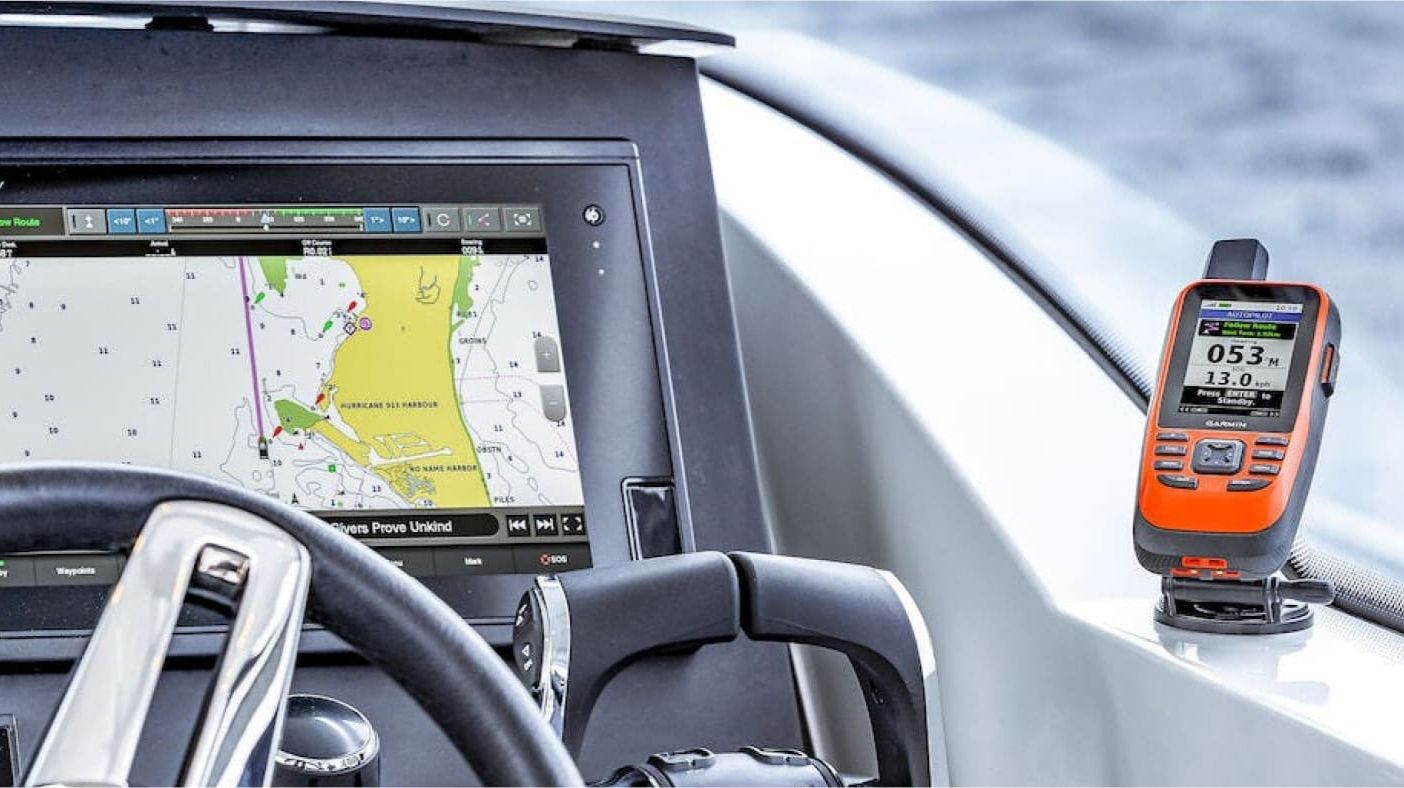
If you’re in the market for a new fishfinder, determining which model to select may seem like a daunting task with so many different options and features available. In this article, SAIL collaborator and expert angler, Ashley Rae of SheLovesToFish.com, will discuss common fishfinder terminologies and features along with the benefits of these technologies to anglers.
Article written in collaboration with Ashley Rae of SheLovesToFish.com
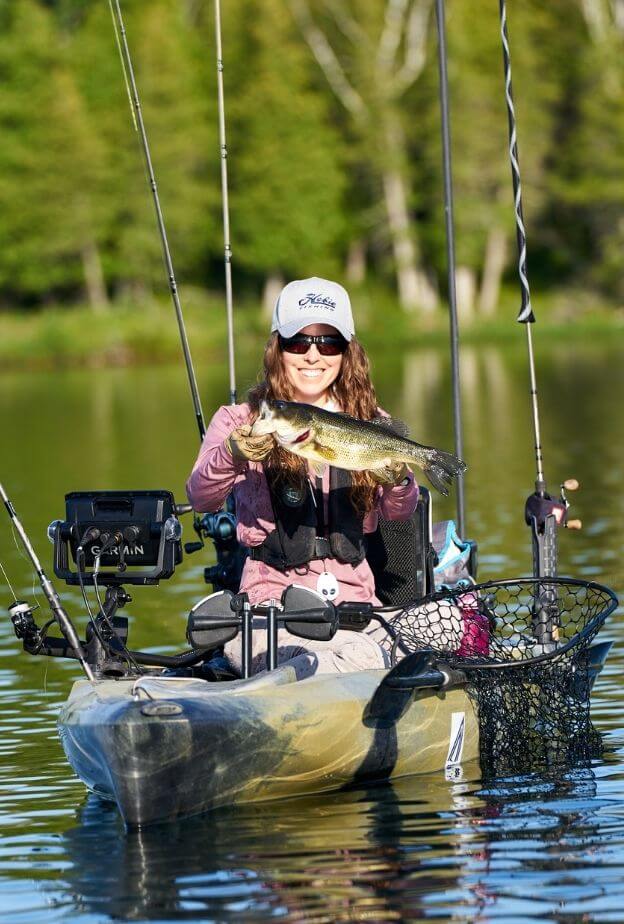
See the different technologies available:
Shop for a sonar model and stop by a SAIL store for even more advice.
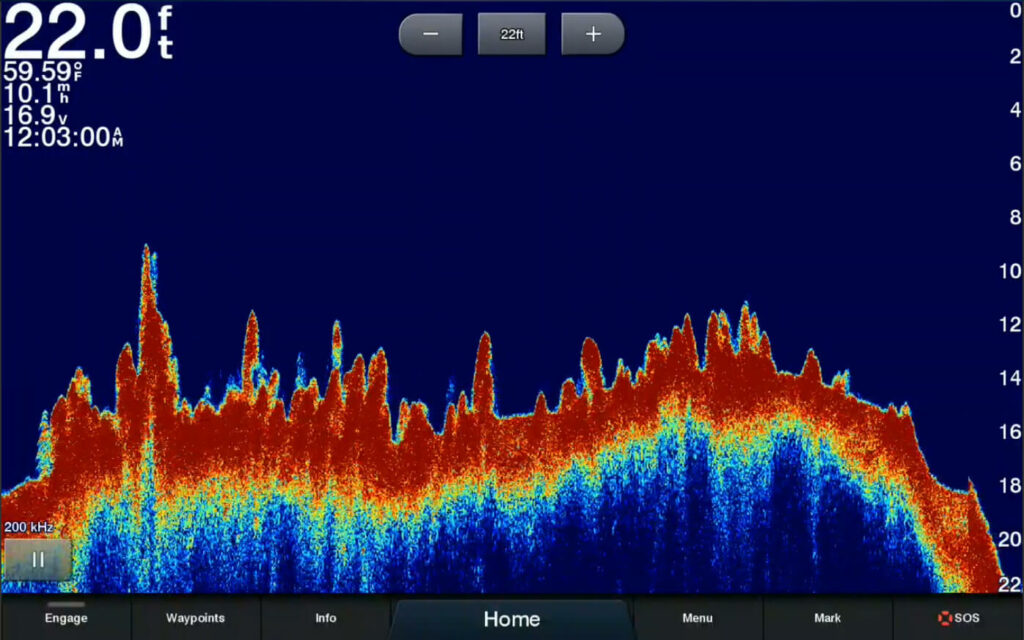
A traditional 2D sonar is the first thing that typically comes to mind when most people think about fishfinders. On screen, you’ll see a scrolling 2D view of what’s directly beneath the transducer including; depth, bottom contours, fish, bait, structure, weeds, rocks, bottom hardness, etc. Many 2D transducers also have the added benefit of having a built-in temperature sensor which will provide a water surface temperature reading.
Traditional 2D transducers work by emitting a cone-shaped beam of sound waves at a single frequency that is narrower at the top and wider at the bottom. Generally speaking, higher frequencies provide greater detail and can excel in scenarios when your watercraft is moving, however the depth range is reduced. Lower frequencies are more suitable for deeper waters and in situations where your watercraft is not operating at high speeds. With regards to the beam width, a narrow beam is efficient in deeper water with a smaller footprint that provides more detail, while a wide beam is more suitable in shallow water with its wider footprint. Many transducers on the market have the option of adjusting the frequency and beam angle to best suit the fishing scenario at hand.
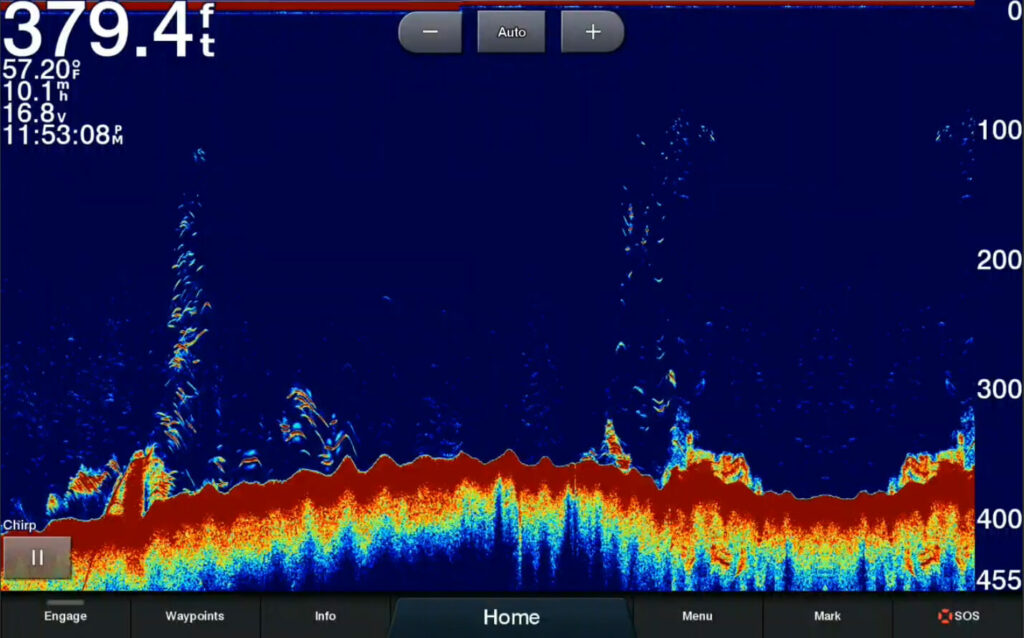
CHIRP is the latest 2D sonar technology to hit the market. Unlike traditional 2D, CHIRP transducers send a continuous sweep of multiple frequencies providing a clearer, higher resolution image. CHIRP provides improved detail and information for anglers and tracks bottom at higher speeds and in deeper waters.
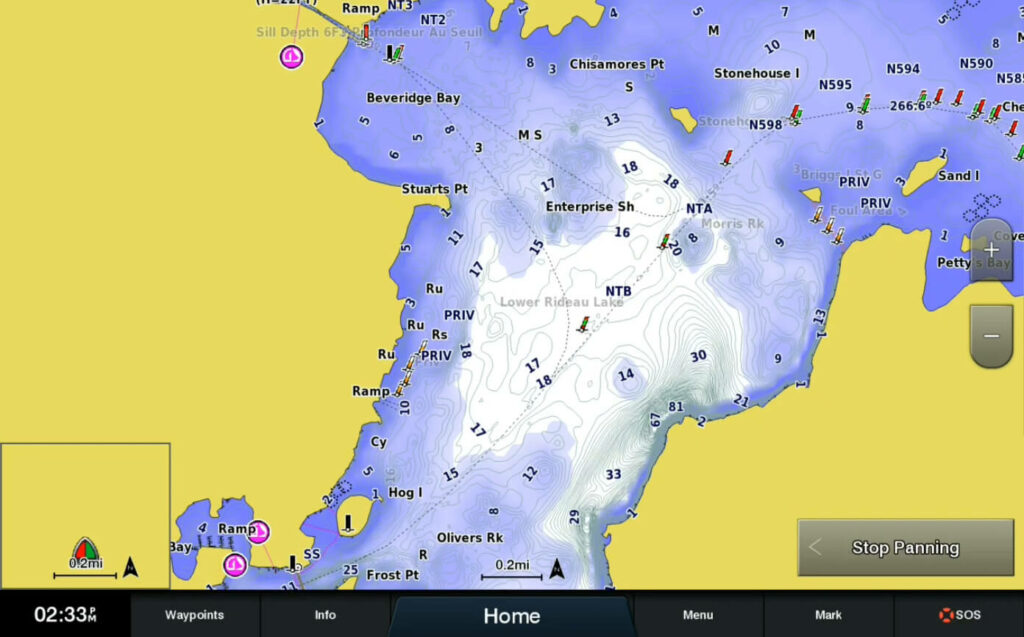
A fishfinder with mapping and GPS capabilities can help take a lot of the guesswork out of navigation. Detailed maps can help you save time locating key fishing areas such as points, drop offs, offshore humps, channels, contour lines, and other types of structure that fish relate to. Mapping can be also helpful in navigating around shallow water, hazards, or channels. Please note that all electronic maps are designed to aid with navigation and should not be relied upon solely for safe navigation as not all hazards may be indicated.
In addition to displaying your current position, the built-in GPS receiver also gives you the ability to track your speed over ground. Speed can be crucial to anglers who are trolling, for example, as it can sometimes mean the difference between bites or no bites. As an avid walleye troller, I’m always paying attention to speed and adjusting it to determine which speed is producing more bites.
The ability to record tracks and save waypoints is also very useful when keeping track of productive areas. Long gone are the days of trying to memorize landmarks on shore to keep track of your best fishing spots!
Fishing an uncharted lake with no mapping available? No problem! This is when Garmin’s Quickdraw mapping comes in handy. This technology allows you to create personalized HD fishing maps with 1-foot contours by recording the information as you navigate a body of water. Even on waters with mapping, this feature comes in handy as you can capture greater detail on structure or contours that are not present on the map.
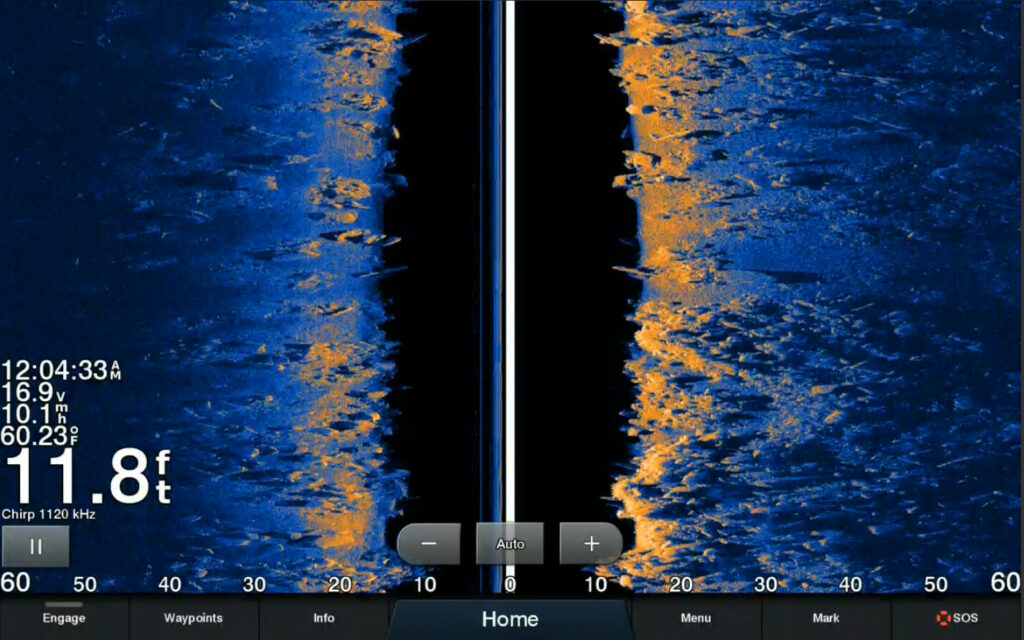
Side imaging in fishfinders
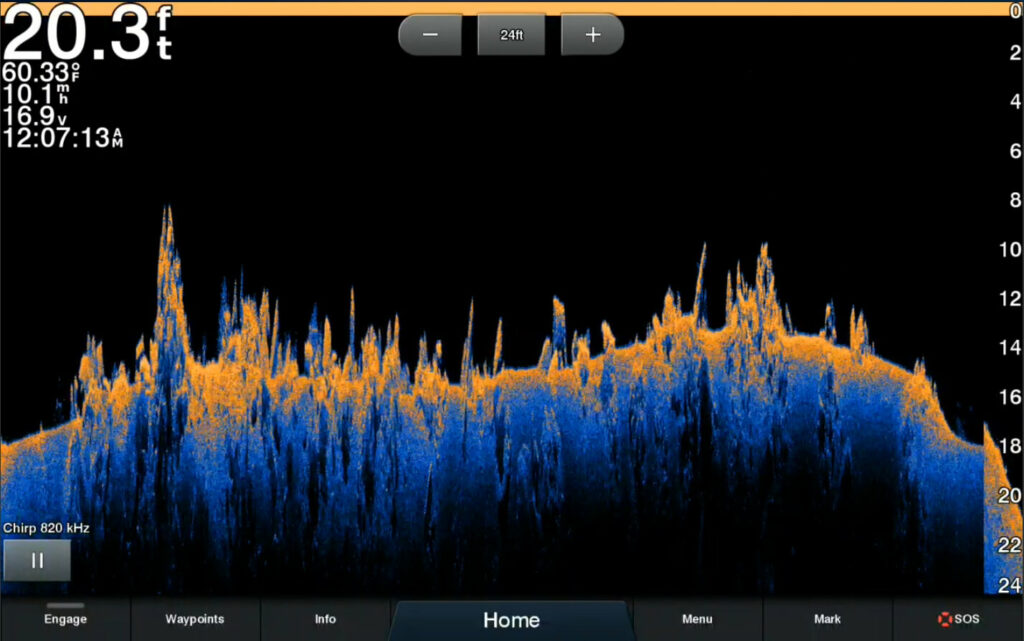
Down imaging in fishfinders
Side and down imaging sonar both share the same imaging technology providing a nearly photographic image of what’s going on below the waterline. Down imaging shows you what’s directly below the transducer (much like traditional 2D, but in significantly more detail). Side imaging sonars give anglers a view of what is both directly below and 200 feet or more off to either side of the transducer. This is great for covering water and cutting down on the time it takes to locate isolated pieces of underwater structure such as isolated weed clumps or rock piles as you don’t need to be directly on top of them to see them. You can even sometimes mark fish with it! It is worth noting that both side and down imaging are designed to work best at lower speeds, with 3-6mph being the sweet spot for side imaging. It’s also worth mentioning that most side and down imaging transducers have one or more selectable frequencies ranging from 455 to +1000kHz. As a general rule, the higher the frequency, the more detailed the image of the bottom will be, but this will come at the cost of a reduced maximum effective range.
Most major fishfinder manufacturers offer what is often referred to as “all-in-one” type transducers, which provide 2D, down and side imaging all in one convenient package or each of the above mentioned technologies as a standalone transducer should you wish to add new capabilities to your compatible unit.
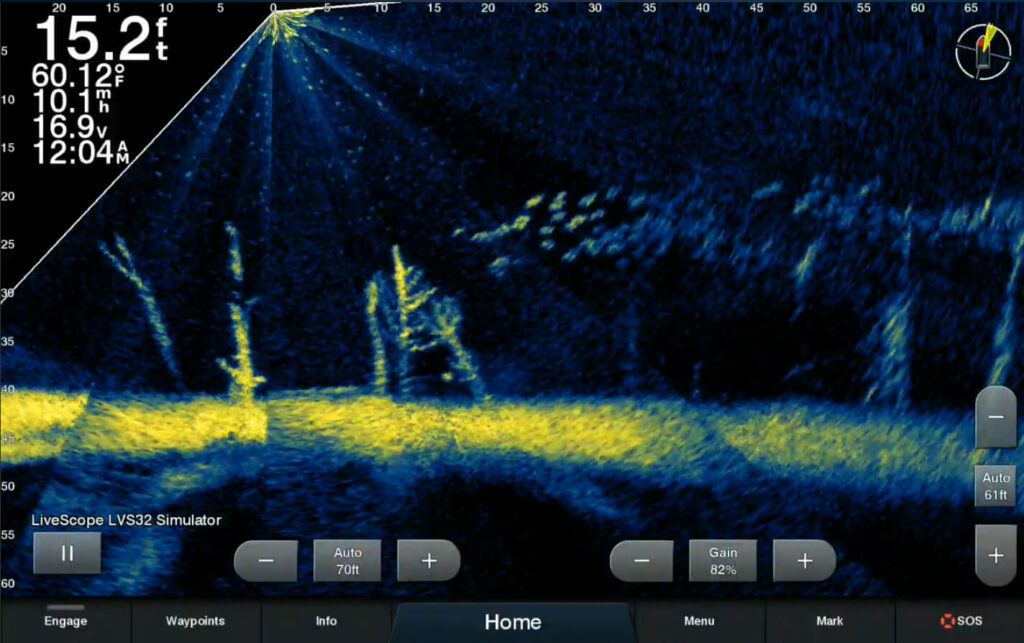
Live sonars are all the rage nowadays. Unlike traditional sonars, down imaging, and side imaging technology – a live sonar provides a real-time view of what’s in front of and below the transducer. Fish and structure can easily be identified. This incredible technology can even allow you to target individual fish by revealing their exact depth, distance and direction in relation to you. You can then use this information to make more precise casts and keep your bait in the strike zone.
Being able to see how fish are reacting to baits provides very valuable information to anglers. Getting to understand the mood of fish can really help make a difference in getting them to strike.